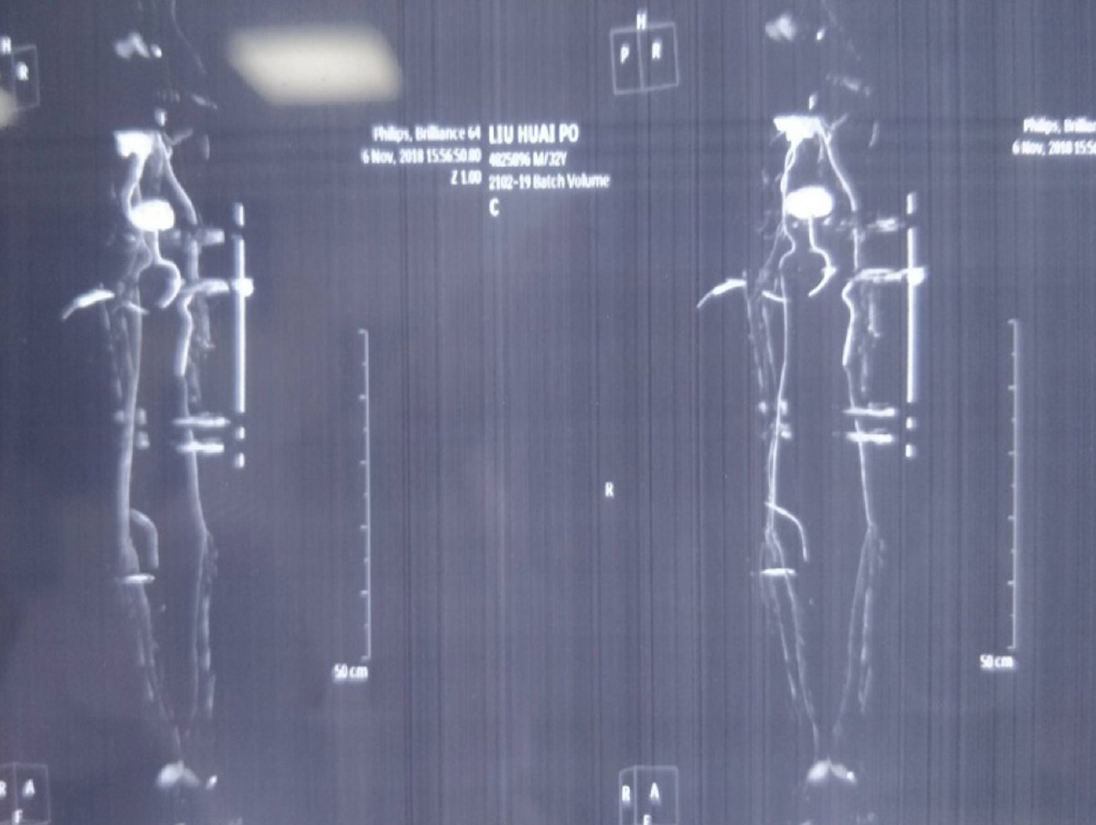Copyright
©The Author(s) 2021.
World J Clin Cases. Apr 6, 2021; 9(10): 2296-2301
Published online Apr 6, 2021. doi: 10.12998/wjcc.v9.i10.2296
Published online Apr 6, 2021. doi: 10.12998/wjcc.v9.i10.2296
Figure 1 Computed tomography angiography.
The left femoral artery defect injury was repaired by anastomosis with an artificial vascular graft.
Figure 2 A severe inguinal wound infected with Acinetobacter baumannii at 2 wk after surgery.
The graft infection was treated by the vacuum sealing drainage (VSD) procedure (negative pressure wound therapy with 125 mmHg was commenced. A: Preoperative appearance; B: The graft was uncovered for a distance of 3.5 cm after the VSD procedure; C: The artificial graft was exposed in the right groin region and the wound revised by rectus femoris muscle flap transposition; D: The muscle flap survived and the wound of the patient at risk healed successfully after 3 wk.
- Citation: Zhang P, Tao FL, Li QH, Zhou DS, Liu FX. Salvage of vascular graft infections via vacuum sealing drainage and rectus femoris muscle flap transposition: A case report. World J Clin Cases 2021; 9(10): 2296-2301
- URL: https://www.wjgnet.com/2307-8960/full/v9/i10/2296.htm
- DOI: https://dx.doi.org/10.12998/wjcc.v9.i10.2296














